Asia Tennis Travels: Dumpling Palooza 2014 in Shanghai


SHANGHAI, China – While I primarily come to China’s largest city to cover the Shanghai Rolex Masters tournament, there is one other thing, for me, that Shanghai is also synonymous with: dumplings. While my colleagues are hitting the fabric market to haggle over shoes and scarves, I've earned the reputation of being a dumpling-obsessed food hunter. Morning, noon and night I usually have some sort of dumpling on my plate in my quest to eat as many as I can before I leave. But there is one special dumpling native to Shanghai that remains king -- xiaolongbao, also known as the soup dumpling.
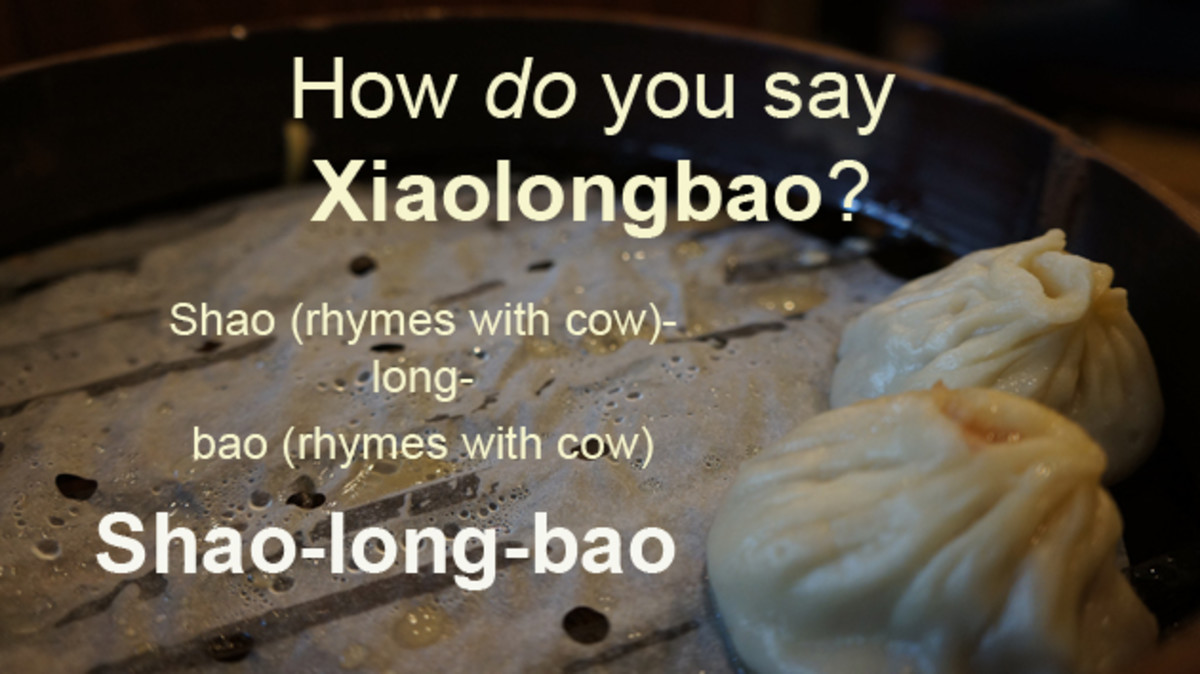
Xiaolongbao is a culinary marvel. Native to the Jiangnan region of China, xiaolongbao is a typed of steamed bun typically containing pork and, within the closed confines of the dumpling, a small amount of scalding hot soup. How does the soup get inside the dumpling? When I was younger I thought the soup was just absorbed from whatever liquid was used to boil the dumplings, but looking back, that theory makes no sense because xiaolongbao are steamed. My alternate hypothesis was that the dumpling was injected with soup through a needle after they were steamed, but that's not true either. The secret to the magic of the xialongbao is the broth, which is put into a solid state by adding gelatin or fat, and then placed inside the dumpling before it is cooked. The soup stays solid at room temperature but liquefies when the bun is steamed. So long as the dumpling skin doesn’t break, you have yourself a soup dumpling.
On a steamy day in Shanghai, I set out on my journey for Dumpling Palooza 2014.
Keeping it real: Fu Chun Xiaolongbao
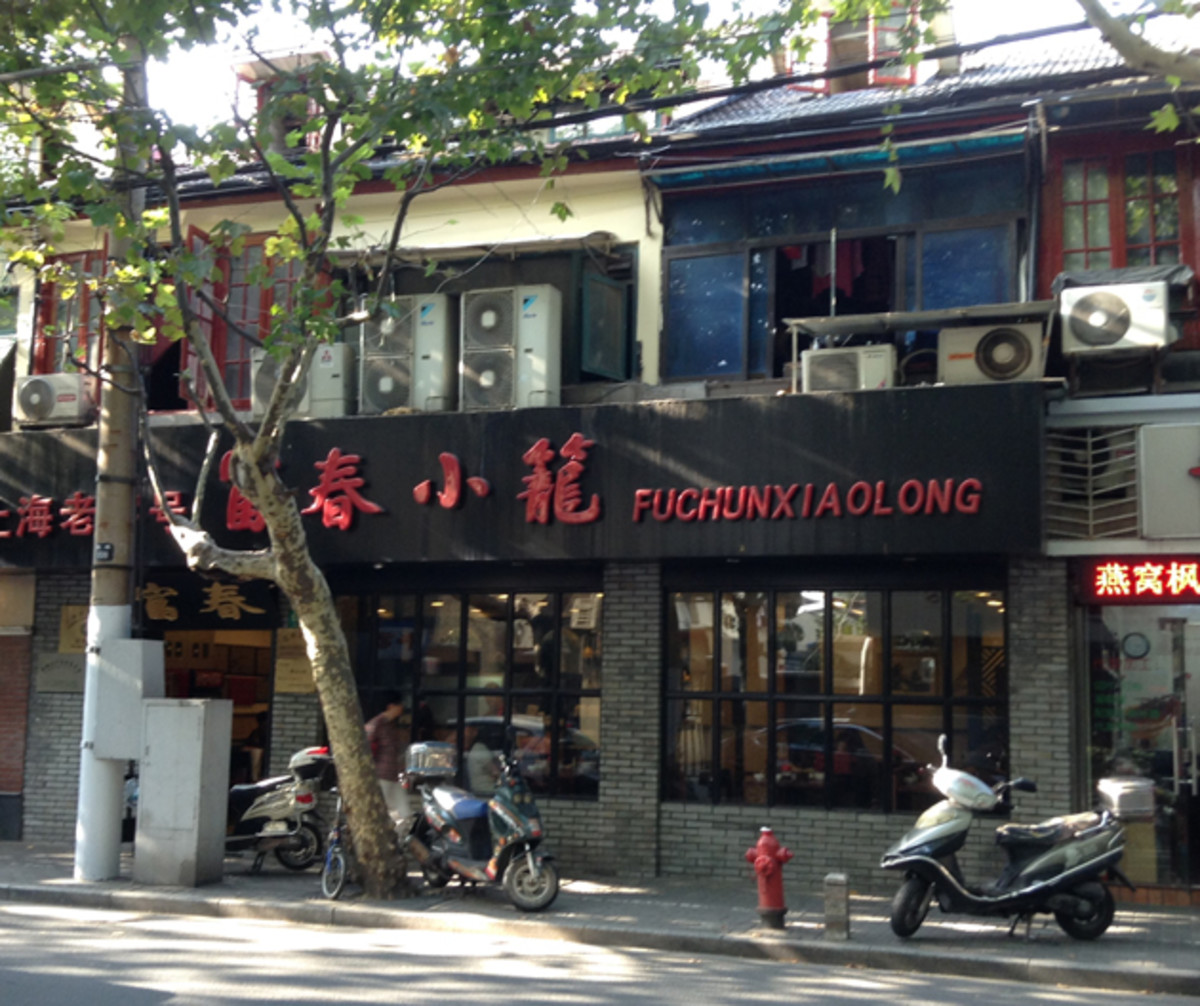
The first stop on Dumpling Palooza 2014 was a small hole-in-the-wall shop called Fu Chun, which is situated on a fairly busy but tree-lined thoroughfare in the Jing’an Temple neighborhood. I had been told by a number of foodie friends that Fu Chun was the place to go if you wanted an authentic xiaolongbao, not the adulterated versions that I was expecting to try later in the day. Though xiaolongbao are normally associated with Shanghai, they actually originated in a suburb of Shanghai called Nanxiang. This city’s xiaolongbao favored function over form. They were created with thicker dough to add some structural resilience for the piping hot soup and meat inside, and as I discovered last year at a famous Nanxiang-style xiaolongbao purveyor, this heavier version resembled six lumps of gray Playdoh fused together rather than the delicate dumplings I was used to.
Asia Tennis Travels: A fall season travelogue to the Far East
Thus, the 30-minute walk to Fu Chun lead me to an unremarkable façade and inside, a restaurant with seating for no more than 30 people. Though the room was full, there was barely a sound other than the slight clinking of chopsticks to bowls. A young woman sat at the counter as I entered and I placed my order with her. Despite the fact that my appearance suggests I am Asian, I don't speak Chinese. To try to overcome this language barrier, my strategy in China has been to just nod my head in response to any questions they ask and hope it turns out for the best.
“Ni hao, xiaolongbao," I said like an alien, meaning, “Hello, soup dumplings.” I answered her questions with "wei,” which I thought meant "yes" but I would come to learn later (i.e., just now) that it actually only means "yes" if you're answering the phone. But, she seemed to understand me and I paid 8 RMB (or $1.30) and sat down at the only open seat left in the restaurant.
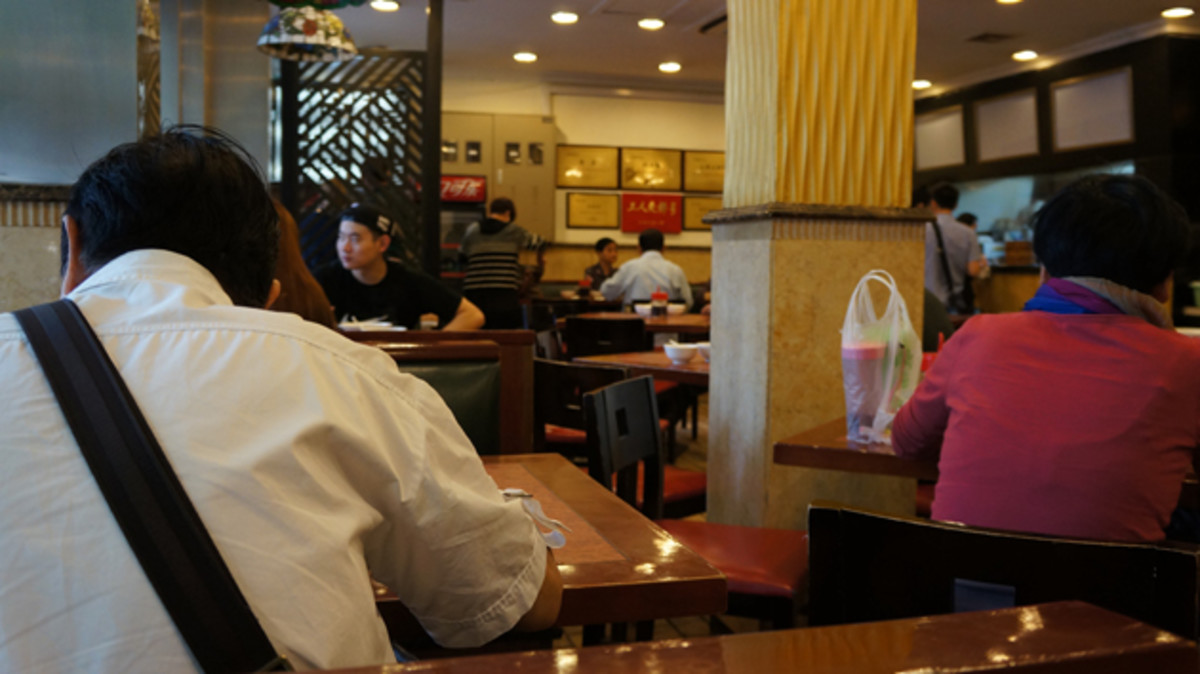
I was struck by how quiet it was. A number of older men were sitting alone eating silently. At the two tables in front of me, a young couple quietly slurped away at some noodles. An old woman who looked to be in her 80s tried to work through a basket of dumplings without, as far as I could tell, any teeth.
Within 10 minutes, my six xiaolongbao arrived at my table. As expected, the skin looked thicker than I was used to, but I was starving and decided to move along. I took a pack of tissues out from my backpack -- Asian countries have a fairly prevalent bring-your-own-napkins policy -- and wiped down my shallow dipping bowl, chopsticks and soup spoon. (A habit that's ingrained in you if you grew up in an Asian household.) I poured some vinegar into the bowl and added a healthy dollop of chili and chili oil. I was surprised I wasn’t given any slices of ginger to go with the dumplings, as I always thought it was standard xiaolongbao protocol.
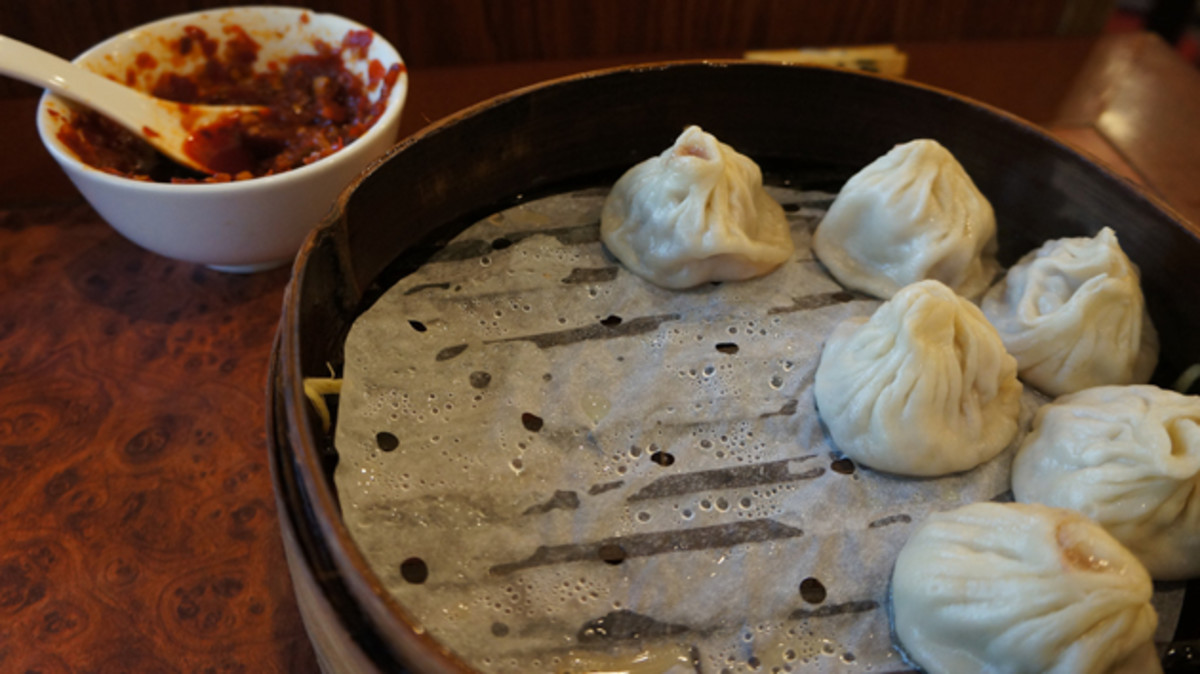
I popped the first one in my mouth and was surprised by the fact that it wasn’t scalding hot. The broth was sweeter than usual and the thicker dough added a chewiness that I enjoyed. It was basically a rustic version of the dumplings I've had at fancy dim sum restaurants in California, and the broth was at such a perfect temperature that I could just pop the whole thing in my mouth without having to worry about third-degree burns. I wolfed down my steamer basket in less than five minutes and ordered a second portion. All in all, I had 12 dumplings to start the day.
Going modern: Din Tai Fung
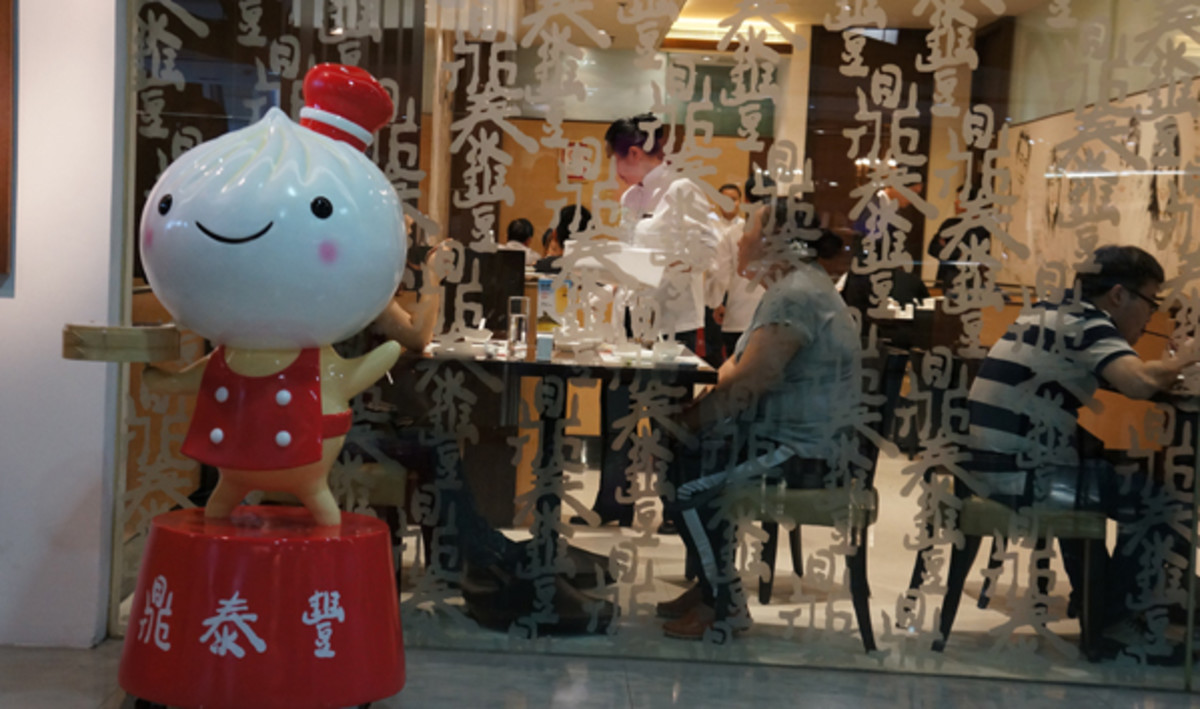
I didn't want to like Din Tai Fung. I just wanted to try it and move on. Here’s why:
- Everyone told me to go there. Mass appeal frightens me.
- It's not even Shanghainese or Chinese. It's Taiwanese.
- It's a chain. This list should end here.
- Its Hong Kong branch was the first Taiwanese restaurant to earn a Michelin Star. Again, suspicious.
- Everyone who worked there spoke fairly good English, and the hostesses were also incredibly friendly.
- As I was sitting waiting for my table, the only other languages I heard around me were English, Spanish, Russian and French. I spotted more than four Lonely Planet guides.
- There was a huge gold engraved plaque at the entrance that featured, word for word, a 1993 New York Times review that named it one of the 10 Best Gourmet Restaurants in the world. It was the only Chinese-run restaurant to make that list.
- The price of the dumplings was significantly more than Fu Chun.
- The menu was in Chinese and English and included mouthwatering photos of every item.
- It was in a mall.
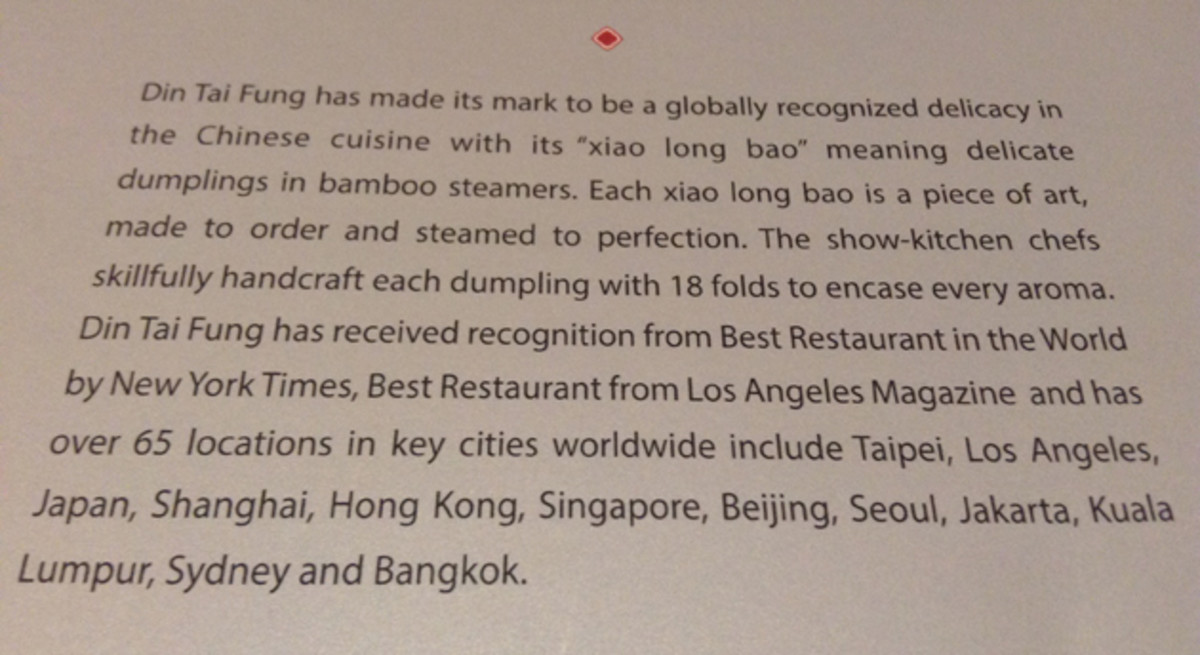
I was already annoyed as I made my way to Din Tai Fung, an international chain of dumpling and noodle restaurants that is regularly named the best dumpling in Shanghai. (An honor similar to being designated as the best slice of pizza in Manhattan or the best burrito in San Francisco.) This particular location of Din Tai Fung was in Xintiandi, a fancy outdoor mall that looks like it could be a part of any affluent American suburb. All of a sudden, I didn’t feel like I was in Shanghai.
Asia Tennis Travels Roundtable: What's the state of tennis in China?
But once I finally got to my table, I felt less annoyed. Yes, I was in a mall. Yes, there was a giant caricature drawing of Jackie Chan staring at me from the Din Tai Fung Hall of Fame. And yes, the waitress brought me a magazine to read because I was only a party of one and she didn't want me to feel lonely. But there was no denying that these were really great dumplings. I ordered the regular pork xiaolongbao and, since it was hairy crab season, the hairy crab roe and pork xiaolongbao. The skin was thinner than Fu Chun and I preferred the appearance of the delicate package and the less chewy texture of the dumpling. The lack of extra dough meant the flavors of the filling could really stand out. After an extra portion of each, I upped my xiaolongbao intake to 32 for the day.
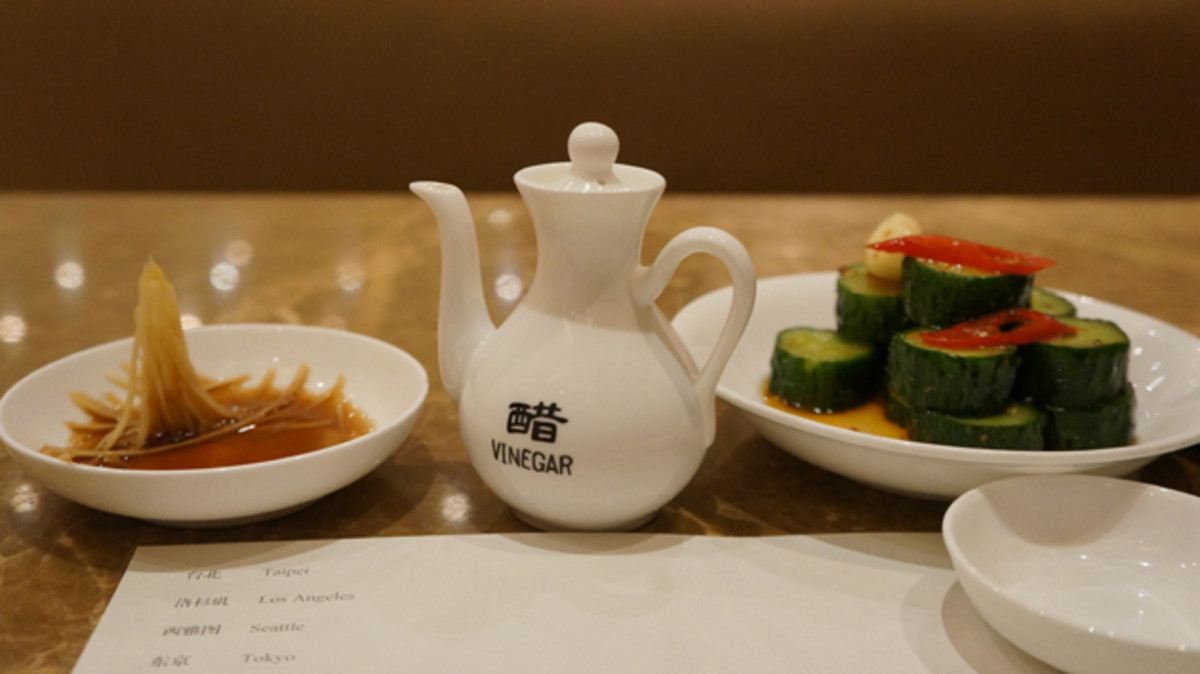
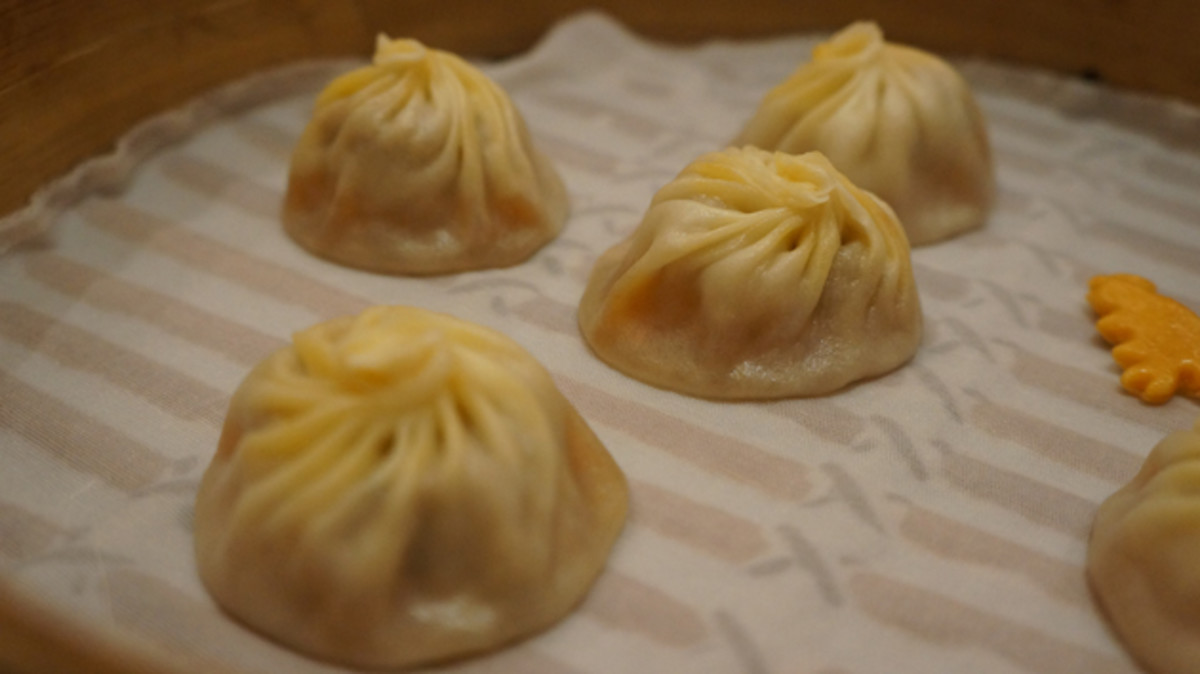
The verdict? I enjoyed the sweeter soup flavor of the Fu Chun dumplings more than Din Tai Fung’s, but the real reason I couldn’t get onboard with Din Tai Fung was simple: price point. While my order of six pork xiaolongbao at Fu Chun was 8 RMB, I received five pork xiaolongbao at Din Tai Fung for 30 RMB (or $4.90). Din Tai Fung's dumplings were not four times better than Fu Chun's.
Shanghai's take: Yang's Fry Dumpling
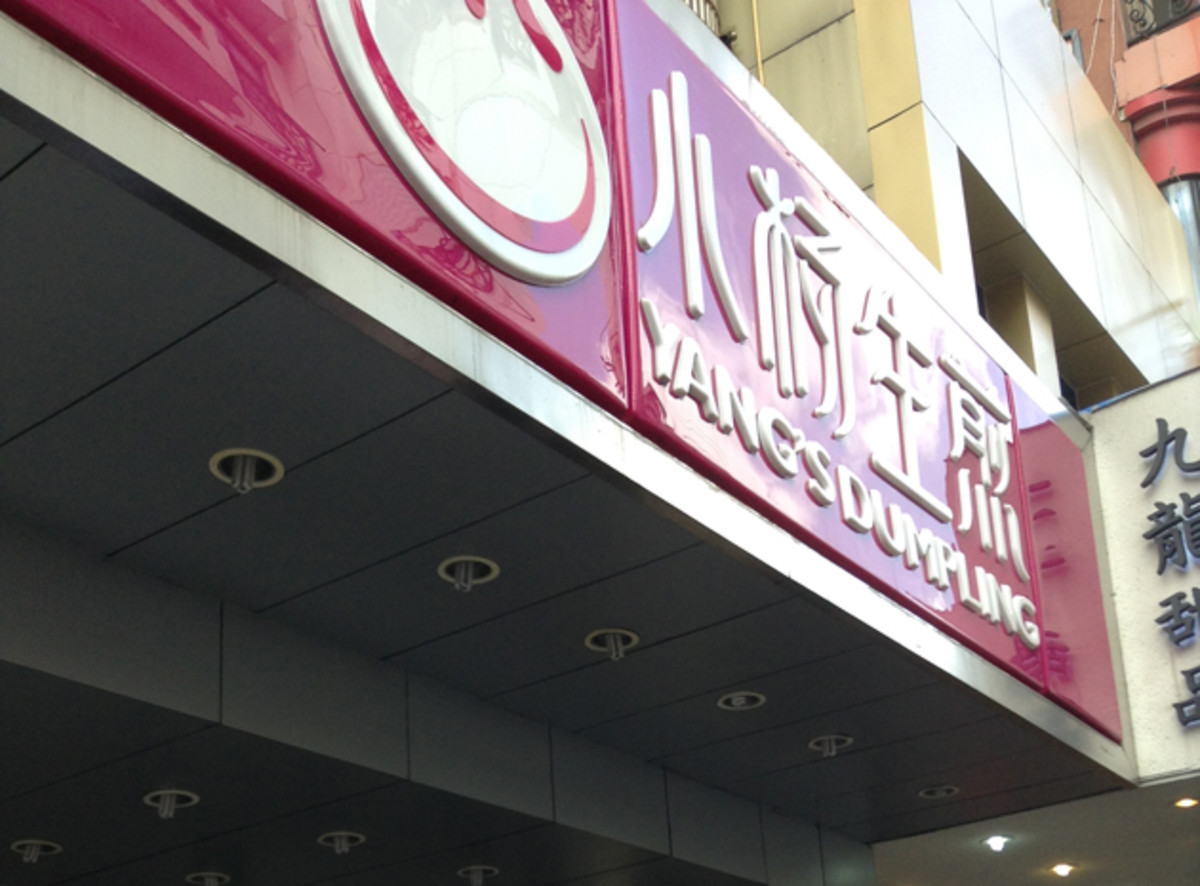
My final stop of the day took me to a more traditional part of Shanghai where they serve a classic Shanghai street food called shengjian bao, a close sibling to xiaolongbao. Like the xiaolongbao it has a pork or seafood and soup filling wrapped inside dough. But the difference is dough and the cooking process. The shengjian bao dough is thick and chewy and the dumplings are pan-fried in oil using a large shallow pan to steam and crisp up the outer edges. Like xialongbao, they also take patience and skill to eat. If you do it wrong you will burn your mouth. Spoiler alert: I burnt my mouth.
Yang's is located near the People's Square between two major streets, Nanjiang Road and Beijing Road. Between the two is an area that felt worlds away from the nearby Gucci, Tag Heuer and Harry Winston stores. Mopeds and bicycles outnumbered cars. Old men sat on stools outside their tiny shops, passing time. And the midst of it all was a small outpost of Yang's (there are a number in the city) and the standard long line of people patiently waiting for freshly fried shengjian bao.
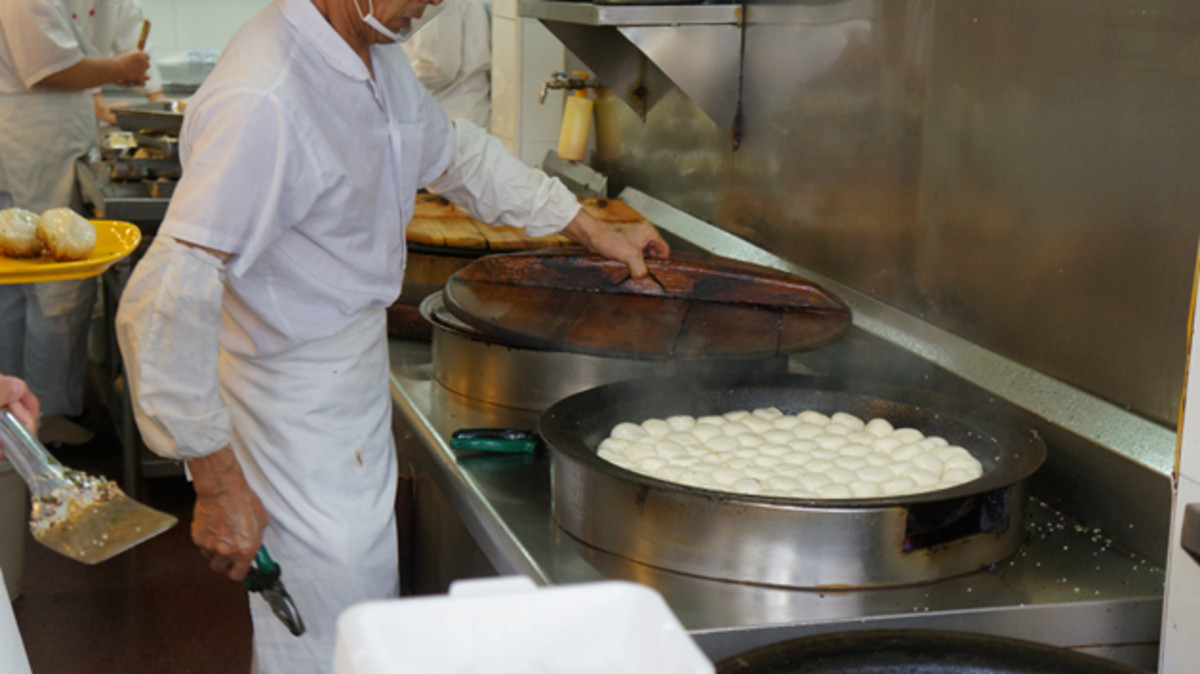
As I was already stuffed with 32 dumplings, I ordered the mixed portion, which included two pork and two shrimp shengjian bao. The seating at Yang's was first come first serve and I took the stairs all the way up to the much-quieter third floor. Once again, I grabbed my pack of tissues and wiped down the table and utensils. I scanned the room for a small jug of vinegar and snatched it back to my table.
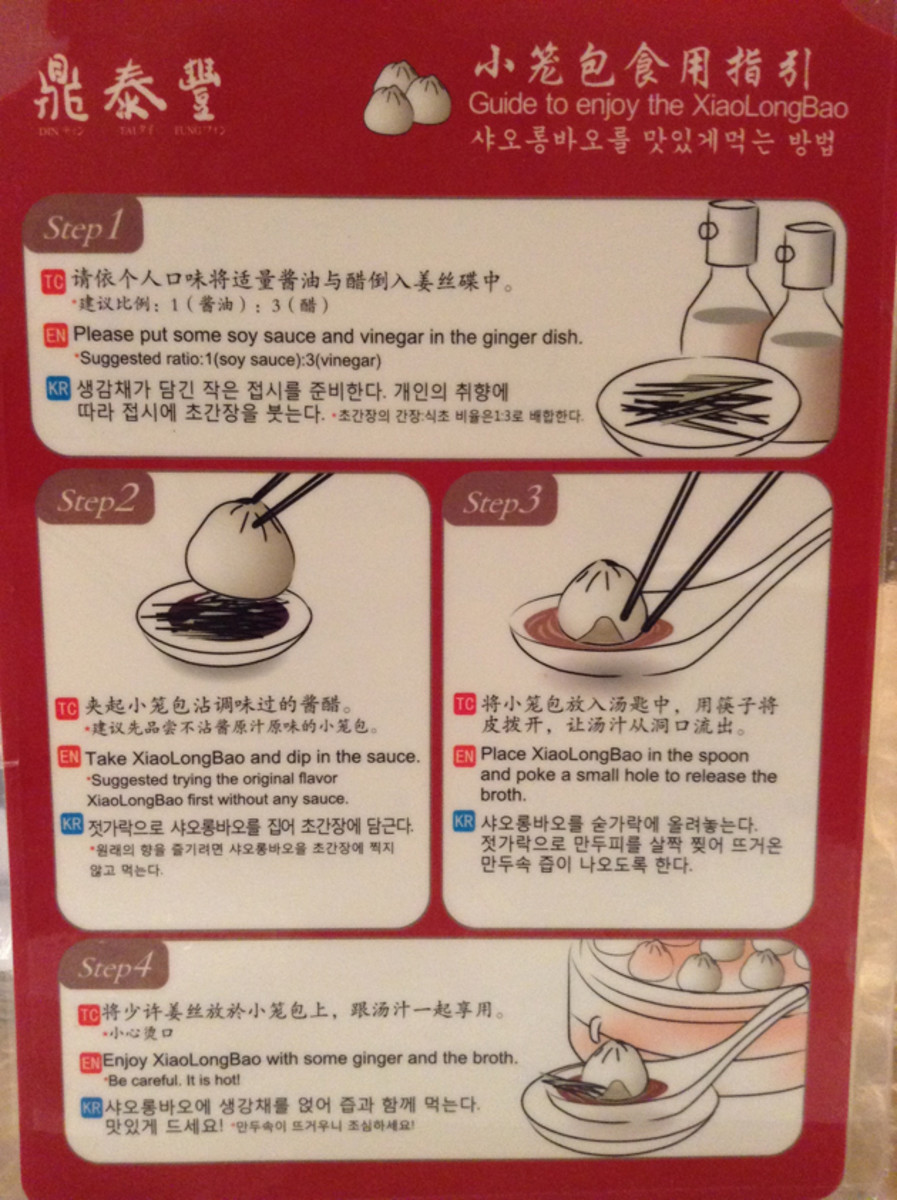
Here's how you eat a xiaolongbao:
- Carefully pick up the dumpling from the knot at the top.
- Dip the dumpling into some vinegar.
- Place the dumpling into a soup spoon.
- Poke the side of the dumpling with your chopstick (or take a small bite) to let the soup spill into your spoon.
- Slurp up the soup.
- Pop the rest of the dumpling into your mouth.
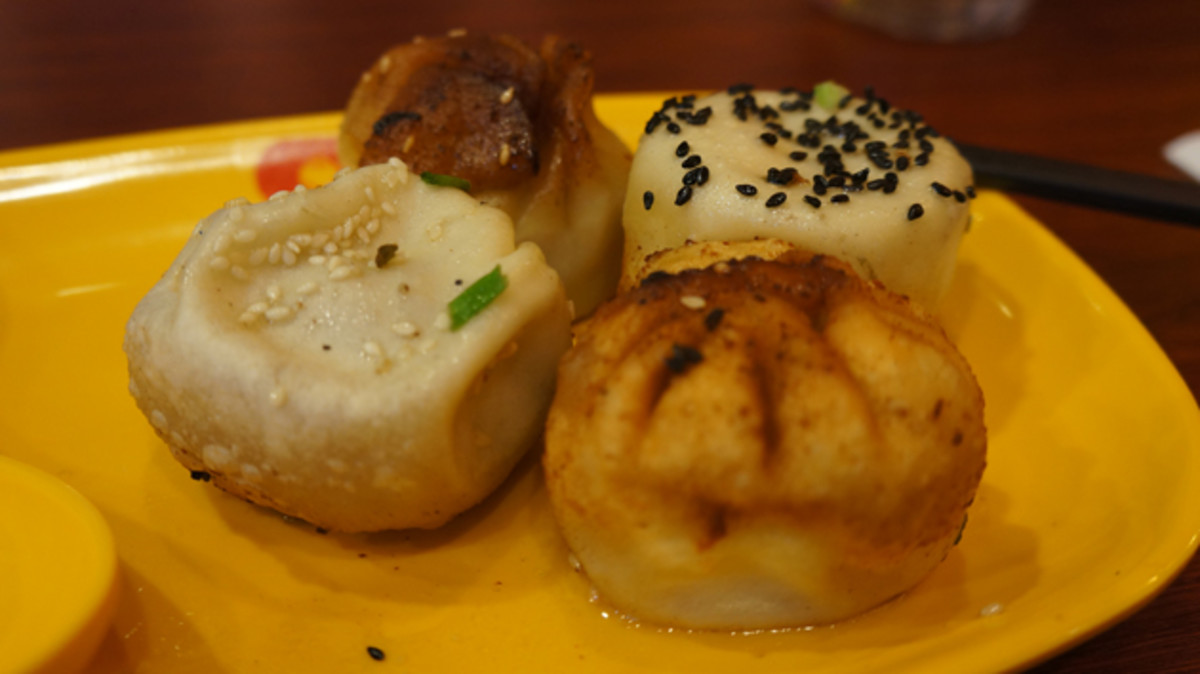
If you do this right then you won't burn your mouth. Maybe it was the onset of food coma, maybe it was the heat from being on the third floor of an unventilated restaurant, or maybe it was just because I was too anxious. But as I went after my first shengjian bao, everything went wrong. The dumpling was too big for my spoon, and when I poked the side, the soup ran out and overflowed the spoon. Frustrated, I went straight into eating the dumpling --which didn't get a chance to cool -- and I burned my lip, tongue and roof of mouth. Despite my troubles, I finished my plate and brought my dumpling tally for the day to 36.*
After all those dumplings in a three-hour window, I barely made it back in time to grab the bus to Qi Zhong Stadium, nearly an hour outside of the Shanghai city center. For most of the ride, I felt like a dumpling: overstuffed and emanating heat from boiling soup in my belly. Thankfully, I was so focused on not getting sick throughout the bumpy ride that I barely paid attention to a FedEx pilot who was regaling us with a myriad of stories about how air travel in Asia is basically a suicide mission. Thanks, dumplings.
*Make that 51. I hadn't had dinner yet.
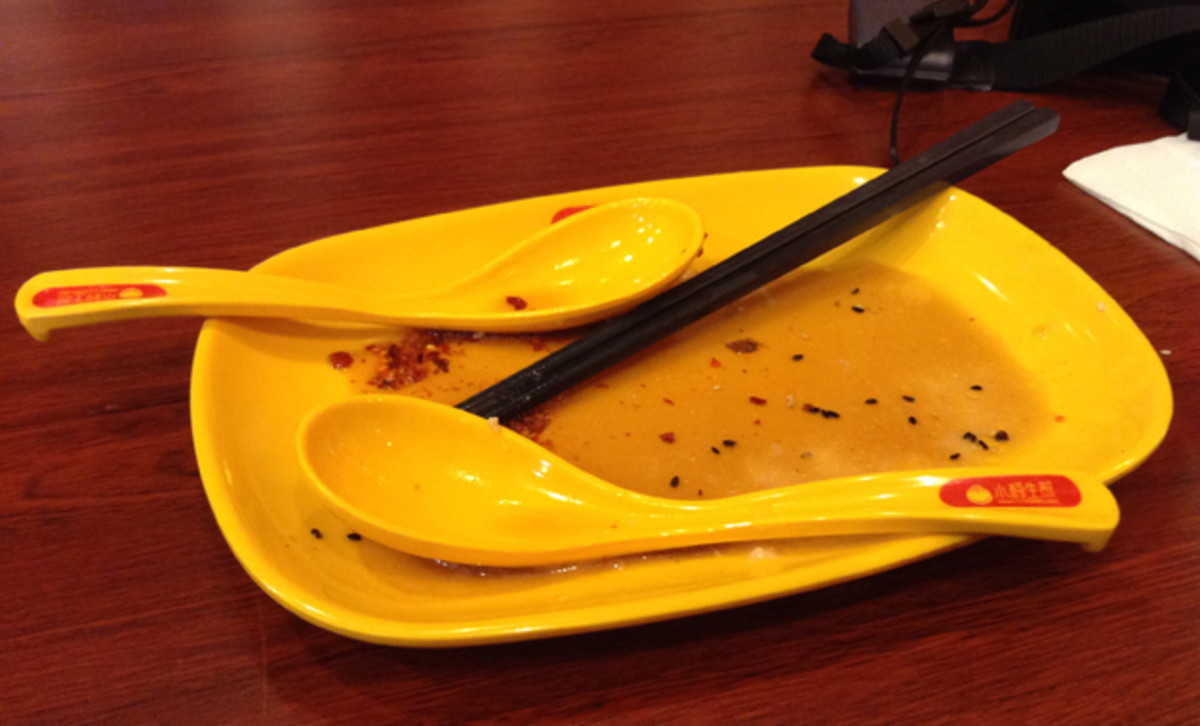
This post is part of SI.com's series, Asia Tennis Travels: A fall season travelogue to the Far East, featuring tournament results, exclusive interviews and a taste of the cultural side of Asia.
